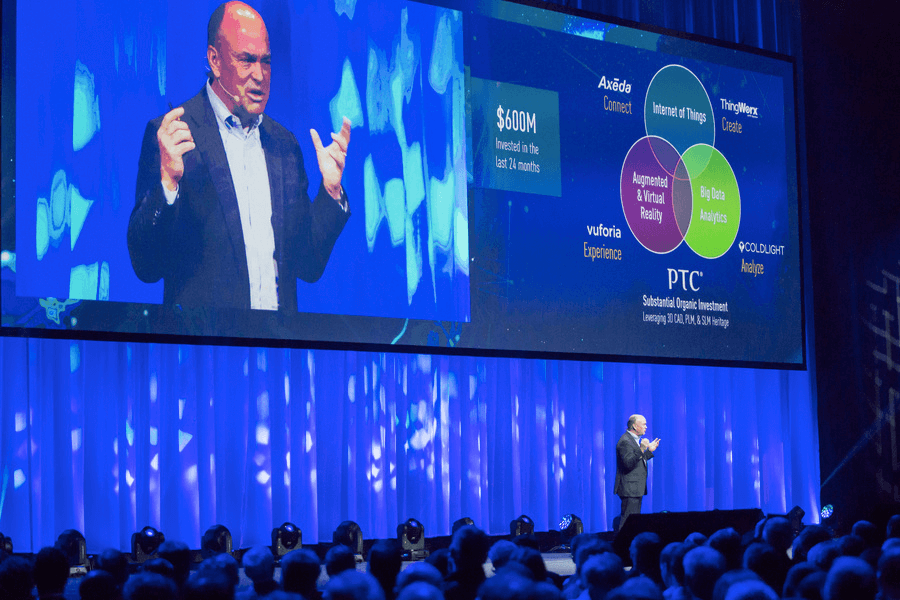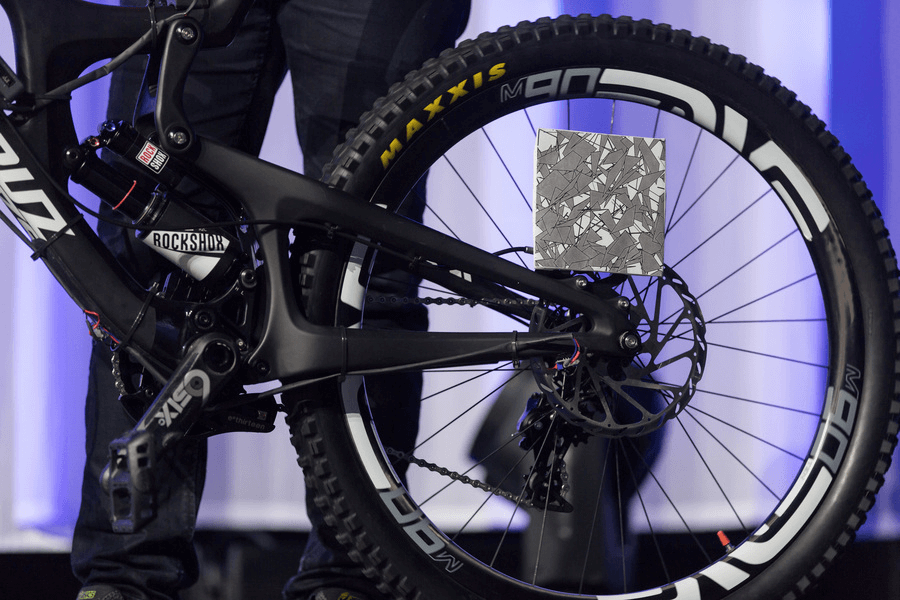I attended the PTC Liveworx event 16th – 18th November in Stuttgart, Germany where I was able to gain valuable insights into the changing world of the Internet of Things. The event boasted around double the attendance from last year, with more than 2500 attendees present, and many more logging in to watch the presentations live.
In an event where I was able to meet David Coulthard, create my own IoT application for monitoring beer travelling cross-borders and flying a quad-copter, it is safe to say the event was a great success.
[easy-tweet tweet=”Read @KateWright24’s key takeaways from the PTC Liveworx conference” user=”comparethecloud” hashtags=”IoT”]
So, what were the key takeaways from the conference? We all know that IoT is beginning to disrupt the market, but understanding the magnitude of this disruption is another state of affairs. McKinsey have suggested that the the industry could be worth more than $4 trillion per year by 2025, with factories, public health and transportation and logistics/navigation eating into the largest slices of the pie.
With such a large market to be targeting, there is undoubtedly going to be a number of challenges. PTC addressed these during the LiveWorx event and how they are combating them.
Capabilities
Jim Hepplemann, CEO of PTC (or Chief Thinker as he was coined at the event by a fellow attendee!), enforced the point that, “everything we know in the physical world can be brought into the digital world, and vice versa.” If you stop to think about this statement, it is truly mind boggling. We are reaching an era where 1000s of machines and devices can communicate with each other, seamlessly and with very little human input.
[easy-tweet tweet=”We are reaching an era where 1000s of machines and devices can communicate with each other” hashtags=”IoT”]
But, with so many elements to consider, how can one organisation manage this? PTC have realised the challenges this will bring, and to counteract it, they are evangelising the need for ecosystems and interoperability. During the past 24 months, PTC have invested heavily in strategic acquisitions and alliances which have seen them partner up with the likes of GE, Bosch and Windchill to merge together the key strengths of their partners to create an ecosystem equipped to develop holistic IoT products.
We were able to see this in motion with the example of the analytics of a bike being drawn through a digital twin avatar (digital realty) – using this they were able to analyse speed, brake speed, tyre pressure etc. But then they took this further, using an iPad app to view the bike in front of them through the lens, with the screen showing the bike with the analytics sitting over the image (augmented realty). Seeing AR in motion put into context for me the future possibilities of how products are created, analysed and serviced.

Trust and Security
Having a wide ecosystem of partners and other tech experts is clearly the way forward for those breaking into the world of IoT. The platforms for analytics and machine learning create a huge amount of transparency within the ecosystem, but how do we make this transparency selective so we don’t put our companies at risk? Dr Kilger from Ernst and Young highlighted that their findings found 82% of companies saying security is the most important aspect of emerging business models adapting to IoT.
software, products and analytics can cover 90% of your security
During a talk by Björn Peters at Exceet Secure Solutions on, “IoT Security: The Secure Approach to Digital Transformation,” he discussed Exceet’s ability to carry out ‘IoT Risk Assessments’ on companies to analyse their vulnerability, both internally and externally. From this they find security solutions that give different stakeholders in the business varying levels of access. The key is to finding a secure structure that doesn’t impede business operations – some security programmes can be a showstopper if you make it more complex than it needs to be. However, Björn did stress the importance of growing your ecosystem on a foundation of trust – software, products and analytics can cover 90% of your security, but there will always be those who will do everything they can to breach security levels.
Consumers
Jim Hepplemann made the point that companies are slow in adapting to the disruption of IoT. If businesses don’t begin to make changes to ready themselves for IoT then they will soon fall behind and put themselves at a competitive disadvantage. However, this begs the questions of whether consumers (outside of the enterprise world) are ready for this disruption? If you are a business that operates solely in the B2B market, then you will (hopefully) find your clients adapting within the next few years. However for those that operate within B2C markets, they may hit barriers with the general public adapting.

I spoke with one gentleman who helped to develop an IoT app that draws data from sensors placed in homes, targeted at those with dementia, Alzheimers, Parkinson’s etc so that carers and health experts can monitor their patients. When he was trialling the device with a study group, he found that some patients were panicking about the idea of sensors being in their house, as if they were in a ‘Big Brother is watching you’ type of situation. The truth is that there are those innovators and early adopters out there, but the vast majority of society will always fall 5-6 years behind in adopting the tech, and this can put some businesses at a real disadvantage.
[easy-tweet tweet=”The vast majority of society will always fall 5-6 years behind development in adopting tech” user=”katewright24″ hashtags=”IoT”]
PTC LiveWorx offered valuable insight and education into the world of IoT, with the possibilities and disruption it will bring to the market whilst addressing challenges and threats within the industry. Having seen the way in which PTC are future-proofing themselves for the market disruption, I am interested to see how the industry will change of the next 10 years, and who will become the big player in the world of IoT.



